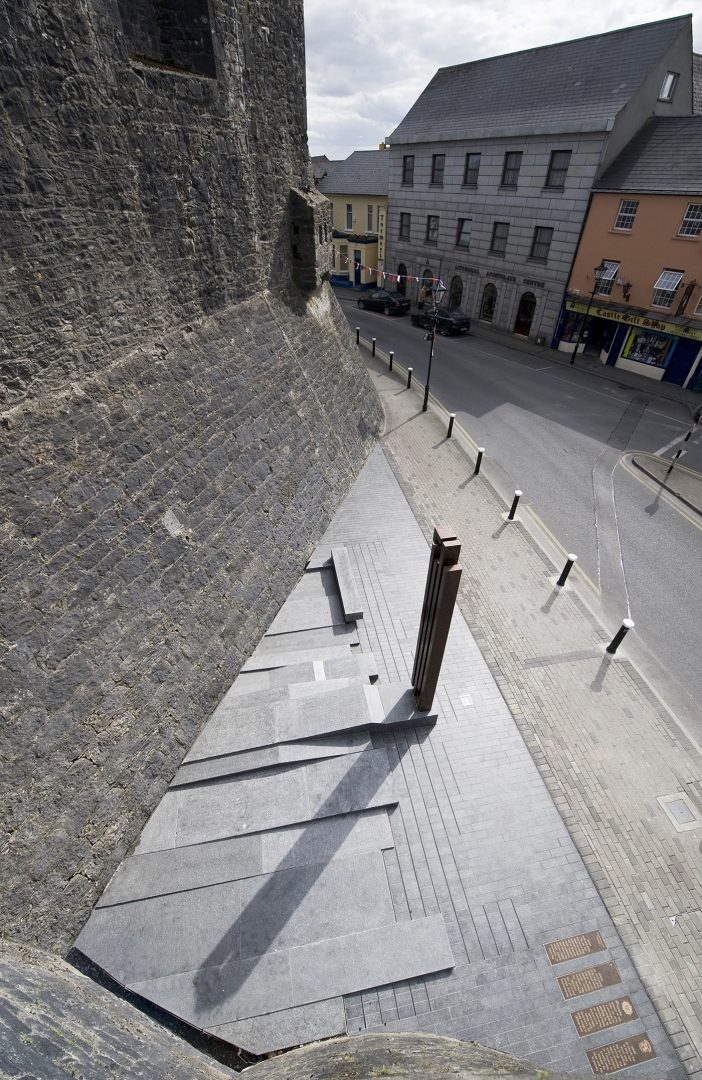

Athlone Army Memorial at Athlone Castle is the smallest but surely the most poignant of Keith Williams’ three Athlone projects which were jointly commissioned by Athlone Town and Westmeath County Councils between 2001 and 2012.
Custume Barracks in Athlone is the headquarters of the Irish Army’s Western Brigade, and the memorial is situated at the base of Athlone Castle walls. Athlone and its castle have a proud military history dating back some 800 years and the castle walls provide a powerful backdrop for the memorial, which was erected in memory of soldiers of the Western Brigade who have died in action on missions abroad.
The memorial is composed of two distinct parts:
The Cenotaph
A cenotaph is a tomb or a monument erected in honour of a person whose remains are elsewhere. Here the cenotaph is made from four interlocking vertical textured bronze plates, recognising the four compass points and the four provinces, Munster, Leinster, Ulster and Connaught from which soldiers were drawn, implying the global spread of the campaigns in which Irish men and women will have fought and died, and the land which spawned them. The plates are rigid and parallel, to represent the enduring order, tradition and discipline of soldiery but fractured in places to symbolise the effects of battle and war.
The Plinth
The Cenotaph is surmounted on a plinth, made from Irish limestone. The plinth is made of a series of randomly folded stone plates indicating the energy and movement of both youth and battle whilst also alluding to diverse physical terrain in which soldiers have served, and the soil on which they were raised.
The memorial does not bear the dates of any campaign, does not commemorate any particular battle or struggle, has no starting date and has no end date. Thus it has a timeless universality and a resonance for the fallen of past and present generations, but also to those who will undoubtedly be lost to future generations in struggles as yet unknown.
Overall the composition is dignified and restrained and whilst its contemplative abstract quality is not overtly militaristic, its monumental quality is intended to be easily understood.
The stone plinth is inscribed in both Irish & English languages with tribute to the fallen.
The completed work creates a unique contemplative civic place within the townscape of this historic garrison town.
Clients : Athlone Town Council and Westmeath County Council
Structural Engineer : ARUP










